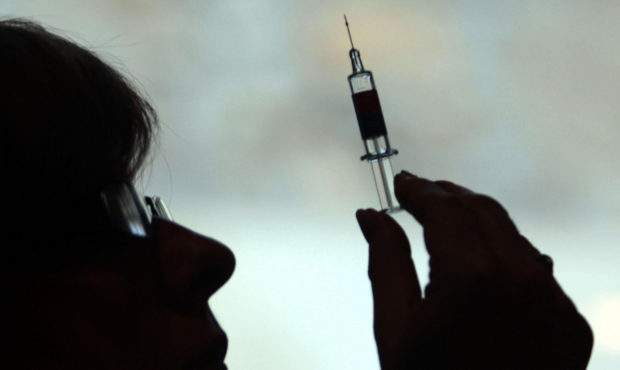
Transmission of Covid-19 drops by at least 30% after a person is vaccinated, a new study suggests.
Public Health Scotland and the University of Glasgow assessed 300,000 NHS workers between December 8 – the first day of vaccination in Scotland – and March 3 to give the first direct knowledge of how the jabs impact transmission.
The study assessed the records of people who live with both vaccinated and unvaccinated health care workers, finding those with who had a single dose were at least 30% less likely to pass the virus on.
Given that people living with healthcare workers could also catch the virus from other sources, the 30% figure is a low estimate.
For those with both doses of the inoculation, they were at least 54% less likely to pass on the virus.
The ability of vaccination to limit transmission has been suspected by experts, but never previously shown in a study.
Dr Dianne Stockton, the Public Health Scotland lead for the Covid-19 Vaccination Surveillance Programme, said the results were “encouraging”, but stressed this should not make the public complacent.
“Despite this good news, it is important to remember that infection prevention and control practices in healthcare settings remain of paramount importance, as do the mitigations to prevent spread in our daily lives,” she said.
The risk of transmission did not go down to zero after individual healthcare workers were vaccinated.
“As Scotland continues to deliver its national Covid-19 vaccination programme, this study does give one more reason why everyone invited to have a vaccine should take up the offer, as not only will it help protect them from Covid-19, but it will help protect the people close to them.”
Dr David McAllister, of Glasgow University, said: “Our study has important implications for informing vaccination strategies.
“The Joint Committee on Vaccination and Immunisation in the United Kingdom recently commented on the lack of real-world evidence evaluating the role of vaccination programmes on transmission.
“We provide the first direct evidence that vaccinating individuals working in high-exposure settings reduces the risk to their close contacts – members of their households.
“Our work will also be of interest to modellers, as it can be used to inform their predictions about future rates of Covid-19 in the community.”

Enjoy the convenience of having The Sunday Post delivered as a digital ePaper straight to your smartphone, tablet or computer.
Subscribe for only £5.49 a month and enjoy all the benefits of the printed paper as a digital replica.
Subscribe